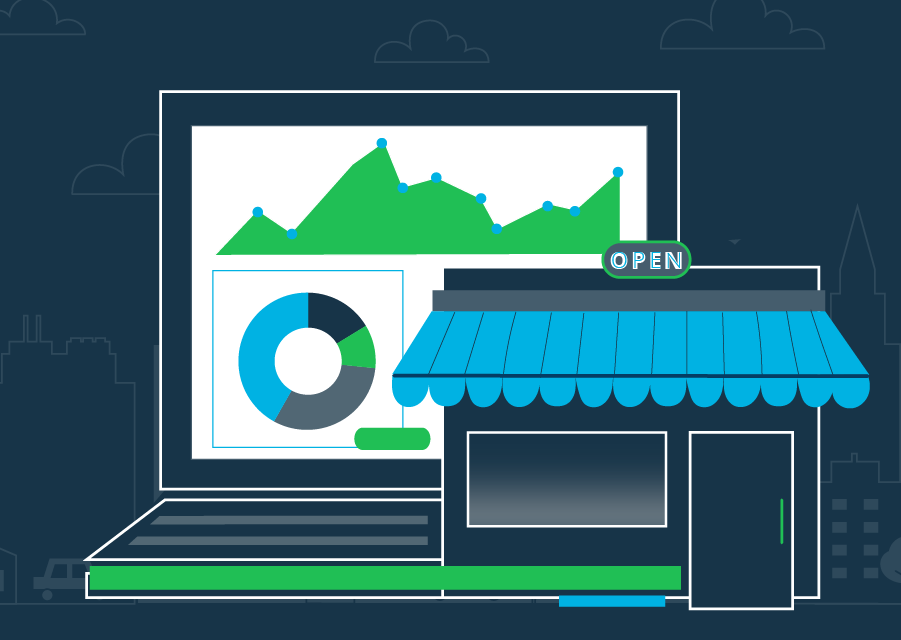How e-commerce data is strengthening in-store strategy and sales

Marcus Startzel, CEO, Whitebox
E-commerce hit all-time highs in 2020, signaling digital transformation was here to stay. In Q4 alone, sales rose to $245.28 billion, up 32.1% from Q4 2019. Each quarter in 2020 saw significant gains in online shopping, with not only more consumers online but more first-time consumers adopting the habit. As one result of that shift, ad dollars are poised to remain focused on e-commerce despite the promise of physical retail opening up fully in the months to come.
Equally likely: Gone are the days of e-commerce duking it out with physical retail. Any brand picking sides is on the losing side of the consumer. Smart brands that want to build customer lifetime value and loyalty should view in-store and online as cooperative, not competitive spaces. Each has its unique appeal and strengths, with a trove of e-commerce data now able to inform in-store strategies. Brands have ample opportunity to transfer learnings across channels, find synergies and ultimately sell more and move more products to consumers.
Among the e-commerce lessons informing the return to in-store and a brand’s holistic strategy, the following are essential to campaigns in 2021 (and beyond).
Brands are using e-commerce to test products before they hit the shelf
Physical retail has very real limits. With a few SKUs and competition all around, brands don’t have much room to test and learn in real time. For example, if a popular snack brand introduces a line of cookies, that new product will be located in a different aisle, making it hard for a loyal consumer to find and discover it.
Whitebox data shows that only 15%–20% of snack and beverage brand products are available in stores compared to online. That means physical shelf space needs to work harder than ever to attract and retain attention in a sea of competition.
Ad position: web_incontent_pos1
What’s more, in-store doesn’t provide the flexibility to test variety or multi-pack products on the fly. Once it’s on the shelf, that product is out of a brand’s hands. Here’s where e-commerce can fill in essential gaps and complement in-store. Brands can test promotions online by launching new products or configurations without ever assembling a single package until it sells, finding an audience for new product lines before introducing them in-store.
Comparing channel signals is powering post-quarantine consumer insights
The consumer is king and queen of modern commerce. As e-commerce saw hockey-stick growth last year, it also revealed that consumers don’t put as much stock in loyalty as brands once thought. Price, convenience and shipping played critical roles in purchase decisions. From delivery to curbside pickup to buy-online-pick-up-in-store (BOPIS), consumers grew accustomed to getting what they want, how and when they want.
The outcome creates an enormous amount of complexity for brands managing several channels with different partners. However, those channel insights are well worth mining. Comparing purchase drivers and consumer behaviors across channels helps brands determine which products to place in-store versus online. Marketers should pay close attention to shipping options as well. While many consumers want instant gratification, next-day shipping is meaningless if it takes weeks to arrive at their door. For those willing to wait, a brand can get creative around making in-store experiences more engaging and interactive.
Diversifying across channels now includes the brand’s online store
Ad position: web_incontent_pos2
Set it and forget it on Amazon may have been a winning strategy in the past, but brands need to cast a wider net. Our data shows consumers shop around. Some consumers make their first purchase in-store and then visit the e-commerce site for a broader selection, while others purchase via a single channel.
Omnichannel approaches are the new normal for brands seeing success across their campaigns. While selling on Amazon is a strong first step, brands should also consider building their own online store where they can develop closer direct relationships with consumers. Filling in-store shelves with best sellers while offering custom or limited-release products online to die-hard fans is an essential step to showcase the store’s value — and then, retargeting first-time buyers with product content that drives logins keeps the site vital. Marketers should look at the resulting data holistically to understand where customers shop to continue to test and refine.
Brands are turning to data for the big inventory picture
Supply chain management faced greater stressors than ever last year. Demand for essential items far outpaced what physical stores could keep in stock, let alone fulfill. Meanwhile, nonessential brands had inventory locked up in-store with no way of servicing online demand. Many brands are still seeing long lead times in getting products made and/or shipped.
Seeing the big picture when it comes to inventory is critical. For example, e-commerce data helped one Whitebox client learn that sales in Oregon and Washington performed best, but their inventory was stored in Louisiana. This was an eye-opening opportunity to move inventory closer to where their customers were located, optimizing shipping with more competitive local providers — improving not only distribution but also operational efficiencies across the supply chain.
Data is the key to modern commerce. Using e-commerce data to help understand consumer habits and desires and develop omnichannel strategies to meet them where they are is driving brands’ campaign success. Keeping in mind that some consumers may be hesitant to return to in-store shopping, while others will crave a tactile in-person experience, brands that diversify across channels will capture more existing customers and prospects.
The war between e-commerce and physical retail is over. The only losers are the ones still hanging on to the fight.

